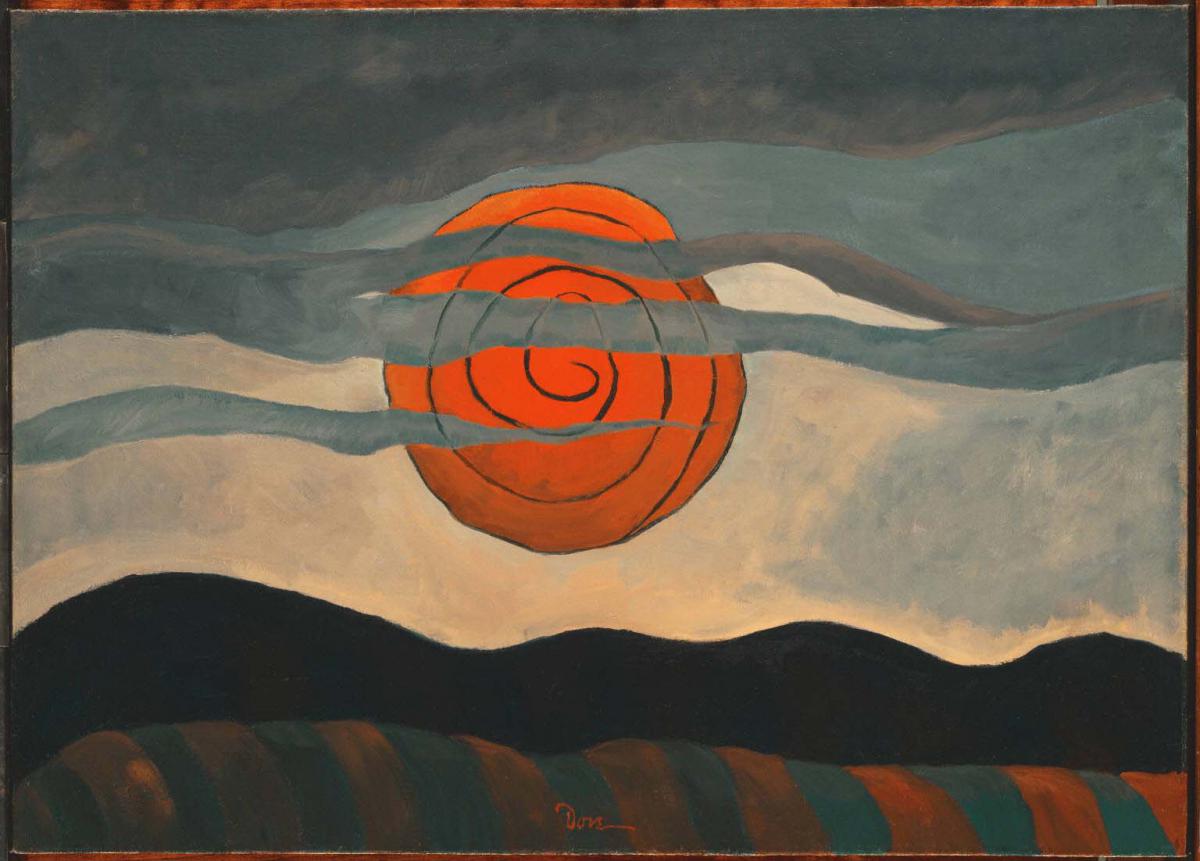Red Sun
Arthur G. Dove ( 1935 )

Red Sun, painted in 1935 during Arthur Dove’s five-year stay in Geneva, New York, is a visual representation of the moment at sunset that hovers between light and dark. It is the pendant piece to his painting Morning Sun, completed the same year. Red Sun reveals Dove’s fascination with both the outward appearance and underlying mystery of nature. Like other paintings Dove executed around this time, the sun is a powerful force in the landscape, this time as a large red-orange orb with a spiraling line of force that hovers over the hills and patterned fields. Its vibrant red radiates throughout the painting, illuminating the sky where it meets the land, conveying the sun’s intensity at the end of the day. Below the darkening sky, thin wisps of clouds cross in front of the glowing sphere, bringing to mind the edge of a descending curtain turning day into night. Red Sun, like its companion painting, attests to Dove’s increasingly rich color and awareness of the interplay of heat and light in the Geneva landscape.
Dove’s interest in giving form to the mystical attributes of the environment was encouraged by fellow artists in Alfred Stieglitz’s circle, which Dove was a part of. He was also influenced by Stieglitz’s interest in theosophical writings of the late 19th and early 20th centuries, which emphasized the correlations between natural forces and visual form. Duncan Phillips recognized Dove’s philosophical attitude as a type of “primitive pantheism … worship of the sun and moon” in which he expounded on “the cycles of life and death in nature.”